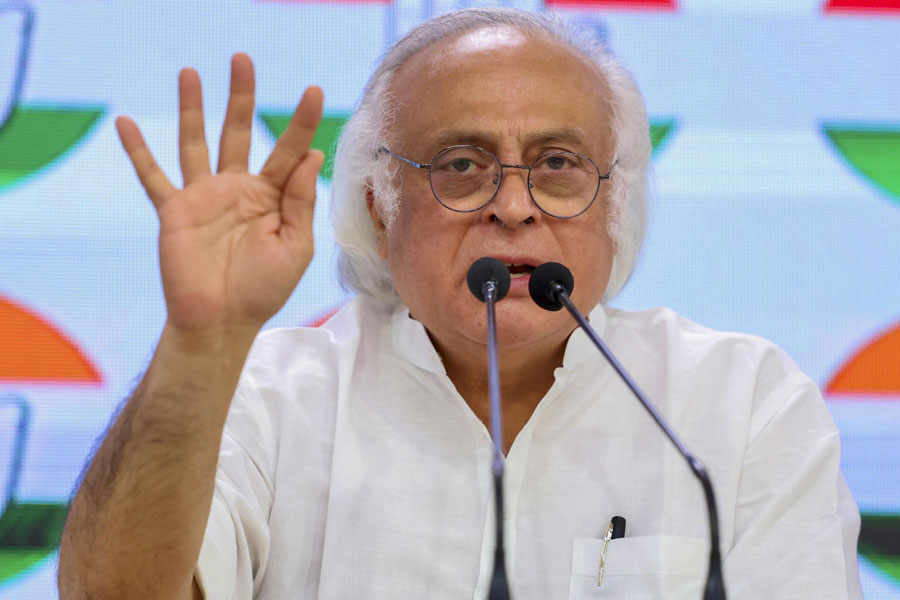
Among the Europeans who braved risky voyages to the fabled land of India in the 18th century were the Daniells: Thomas and his nephew, William. The Mughal collapse had left just the political vacuum and attritional wars that hasten decline and create an ideal haunt for fortune-seekers. But while it was spices, cotton, indigo and all conceivable items of inland trade that bloated the coffers of the English East India Company, of its servants and their favoured private traders, the booty that the Daniells carried back to England was of a different kind: a trove of sketches which, in the pre-camera age, became a priceless record for posterity.
Just how priceless is revealed by the show of Daniell prints on view till August 14 at the Victoria Memorial. Because they persuade Indians to rediscover India. A land that reserves its creative ardour for religion and empire, wears its history lightly, remains socially conservative and has no memory of milestones left for foreigners to unearth.

When the Daniells set sail from England in 1786, the Company had not only consolidated its position in Bengal but had also been rid of its most formidable foe in the south, Hyder Ali. That probably explains the itinerary of the Daniells. The exhibition leaflet informs the viewer that they went up the Ganga and on to Serinagar between 1788 and 91; toured around Mysore in 1792-93; and visited Bombay and the west before setting sail again in 1793. In other words, their bases were the settlements of Calcutta, Madras and Bombay. But there's no doubt that travelling in such chaotic times wasn't easy.
Once back in London, they turned the sketches into watercolour and oil paintings and then proceeded to pull out a total of 144 coloured acquatints of these Indian views for a six-volume publication titled Oriental Scenery of which 40 are displayed here. The choice of acquatint indicates that the artists wanted their prints to closely approximate the limpid tones of watercolour. And, in fact, standing one-and-a-half feet or so away, the viewer can't tell right away if it's a print he's looking at or a particularly controlled watercolour unless he leans across the rope barrier.
It's quite expected that the artists would have paused to sketch such remarkable landmarks as Ellora's Kailashnath temple or the Jama Masjid, the ghats of Benaras or the gateway to the tomb of Akbar, the Elephanta caves or Mahabalipuram. But it's the unexpected sites -like Fakeer's Rock, an excavated temple in Salsette or even the masjid at Jaunpur - that remind you of a formidable range of utterly neglected treasures that would've been the boast of a more conscious nation. Fakeer's Rock (picture), overlooking the Ganga, is particularly dramatic with its relief figures. But even such fringe areas as Gour are steeped in atmosphere as forlorn ruins of Islamic architecture, a minar perhaps or a darwaza - imagined by their presumptuous builders as defiant assertions of eternity - are reclaimed by wild, burgeoning Nature.
What overwhelms the viewer is the sense of space, the sense of a vast landscape yet to be degraded by unchecked human numbers. Well-known monuments seem to be standing in the middle of nowhere. As for Chowringhee, storks contemplate a water-body opposite a few stately, two or three-storied buildings! However, since photographic art, too, must pluck the image out of reality, the idyllic tenor of the prints hardly reflects the tumultuous changes - political, social and economic - taking place all over the subcontinent then. Yet they can still induce, even in cynics, a sentimental longing for a far-from-perfect past.
It's only expected that an artist like Raza would inspire younger aspirants. Although nowhere does the gallery, Emamichisel Art -which recently hosted a show of Neetu Singhal Sureka - mention the senior artist in its introductory note, you can clearly see that there's no escaping the iconic figure when philosophic thoughts seek their visual correlative.
The form she pegs her "yoga meditation" on is the circle with concentric rings that comes from the mandala layout of Buddhist iconography, but the artist replaces its stylized figuration with the kind of abstraction Raza is known for. Some of the works are, despite ponderous and pretentious philosophic poems and notes that accompany them, not without a certain visual pull, particularly where she can curb her effusion as she does in the best of the works, Golden Aura. It's also apparent that she worked hard on them. But there's a glitz in these permutations that would suit high-end hotels marketing 'the real India' better than gallery walls.










